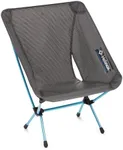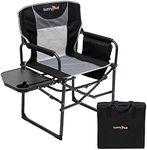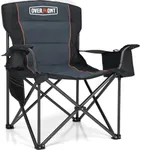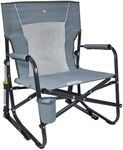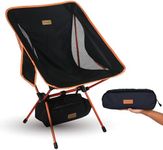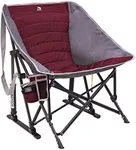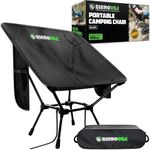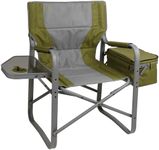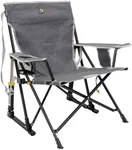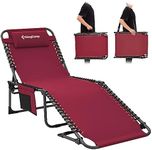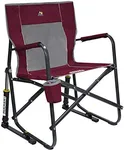Buying Guide for the Best Camp Chairs
Choosing the right camp chair can make your outdoor experience much more comfortable and enjoyable. Whether you’re heading to a campsite, a picnic, a festival, or just relaxing in your backyard, the right chair should match your needs for comfort, portability, and durability. Before you buy, think about how you’ll use the chair most often, how much you’re willing to carry, and what features matter most for your activities.Weight CapacityWeight capacity refers to the maximum weight the chair can safely support. This is important because using a chair beyond its limit can lead to discomfort or even breakage. Chairs typically range from supporting around 200 pounds to over 400 pounds. Lighter capacity chairs are often more portable but may not be as sturdy, while higher capacity chairs are built for durability and can accommodate a wider range of users. Choose a chair with a weight capacity that comfortably exceeds your own weight, especially if you want extra stability or plan to use the chair for extended periods.
Chair WeightChair weight is how much the chair itself weighs when packed. This matters if you need to carry the chair over long distances, such as hiking to a remote campsite. Lightweight chairs (under 5 pounds) are easy to carry but may sacrifice some comfort or stability. Midweight chairs (5-10 pounds) balance portability and comfort, while heavier chairs (over 10 pounds) often offer more features and sturdiness but are best for car camping or situations where you don’t have to carry them far. Think about how far you’ll need to transport the chair and how much weight you’re comfortable carrying.
Packed SizePacked size is the amount of space the chair takes up when folded or stored in its carrying bag. This is important if you have limited space in your car, backpack, or storage area. Compact chairs fold down small and are great for backpacking or travel, while larger chairs may offer more comfort but take up more room. Consider how much space you have for transporting and storing the chair, and choose a packed size that fits your needs.
Seat HeightSeat height is the distance from the ground to the seat of the chair. Low chairs (under 12 inches) are great for lounging, beach use, or situations where you want to stretch your legs, but they can be harder to get in and out of. Standard height chairs (12-18 inches) are comfortable for most people and work well for general camping. Tall chairs (over 18 inches) are easier to stand up from and may be better for people with knee or mobility issues. Think about your comfort and mobility needs when choosing seat height.
Frame MaterialFrame material affects the chair’s durability, weight, and resistance to the elements. Common materials include aluminum, steel, and sometimes plastic. Aluminum frames are lightweight and resistant to rust, making them good for portability and wet conditions. Steel frames are heavier but offer more strength and stability. Plastic frames are usually found in budget chairs and are less durable. Choose a frame material that matches your priorities for weight, strength, and expected weather conditions.
Fabric MaterialFabric material is what you sit on and determines comfort, breathability, and durability. Polyester and nylon are common, offering good durability and quick drying. Mesh panels can add breathability for hot weather. Heavier fabrics may last longer but can be less comfortable in warm conditions. Consider the climate you’ll use the chair in and how much wear and tear you expect the chair to endure.
Extra FeaturesExtra features include things like cup holders, storage pockets, headrests, footrests, and reclining options. These can add convenience and comfort but may also increase the weight and size of the chair. Decide which features are important for your typical use—if you like to have a drink handy, a cup holder is useful; if you want to nap, a reclining back or headrest might be a priority. Focus on features that will genuinely improve your experience rather than just being nice to have.

